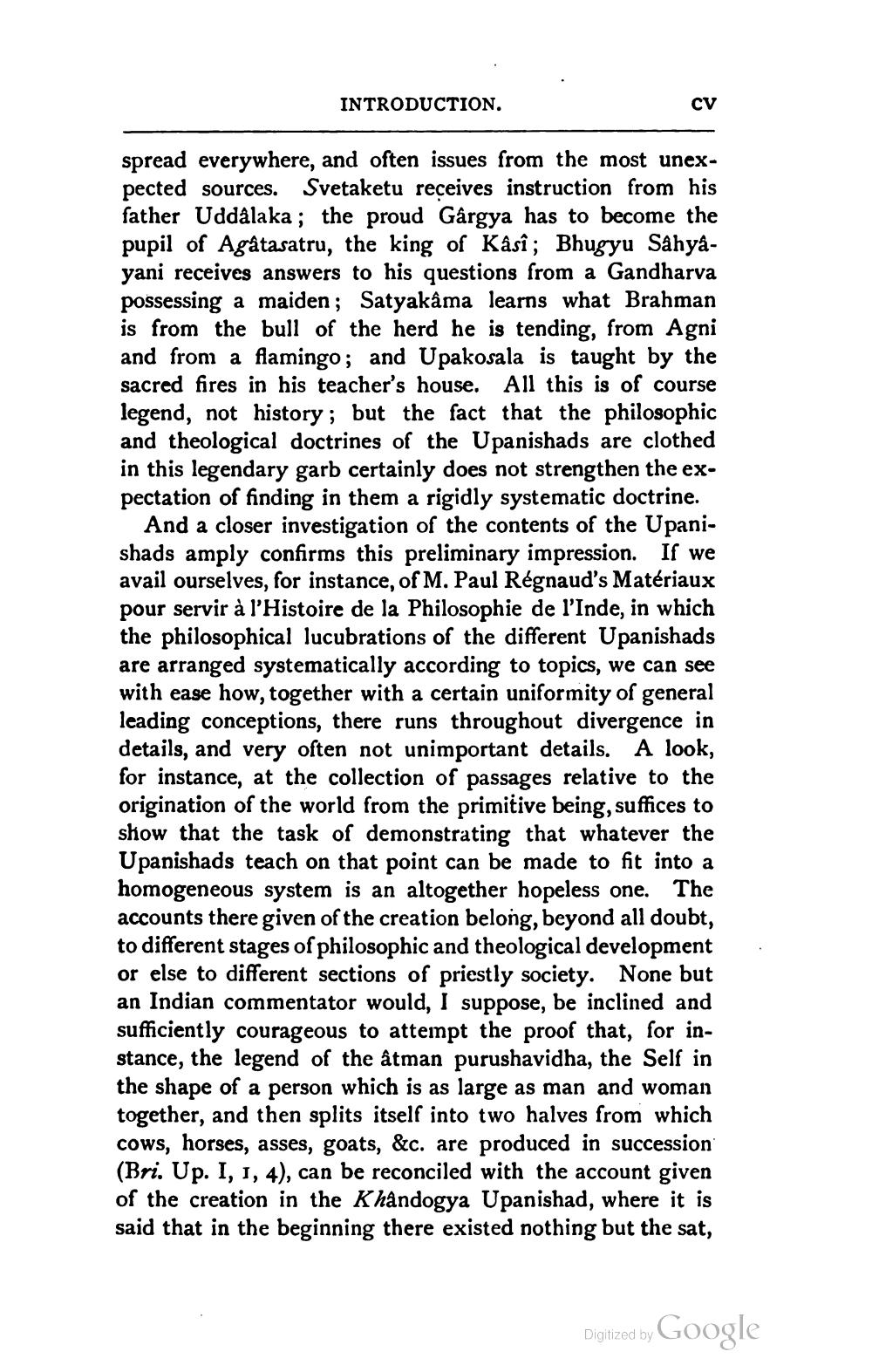________________
INTRODUCTION.
су
spread everywhere, and often issues from the most unexpected sources. Svetaketu receives instruction from his father Uddalaka; the proud Gárgya has to become the pupil of Agâtasatru, the king of Kâsî; Bhugyu Sahyayani receives answers to his questions from a Gandharva possessing a maiden; Satyakâma learns what Brahman is from the bull of the herd he is tending, from Agni and from a flamingo; and Upakosala is taught by the sacred fires in his teacher's house. All this is of course legend, not history; but the fact that the philosophic and theological doctrines of the Upanishads are clothed in this legendary garb certainly does not strengthen the expectation of finding in them a rigidly systematic doctrine.
And a closer investigation of the contents of the Upanishads amply confirms this preliminary impression. If we avail ourselves, for instance, of M. Paul Régnaud's Matériaux pour servir à l'Histoire de la Philosophie de l'Inde, in which the philosophical lucubrations of the different Upanishads are arranged systematically according to topics, we can see with ease how, together with a certain uniformity of general leading conceptions, there runs throughout divergence in details, and very often not unimportant details. A look, for instance, at the collection of passages relative to the origination of the world from the primitive being, suffices to show that the task of demonstrating that whatever the Upanishads teach on that point can be made to fit into a homogeneous system is an altogether hopeless one. The accounts there given of the creation belong, beyond all doubt, to different stages of philosophic and theological development or else to different sections of priestly society. None but an Indian commentator would, I suppose, be inclined and sufficiently courageous to attempt the proof that, for instance, the legend of the atman purushavidha, the Self in the shape of a person which is as large as man and woman together, and then splits itself into two halves from which cows, horses, asses, goats, &c. are produced in succession (Bri. Up. I, 1, 4), can be reconciled with the account given of the creation in the Khandogya Upanishad, where it is said that in the beginning there existed nothing but the sat,
Digitized by
Digized by Google




